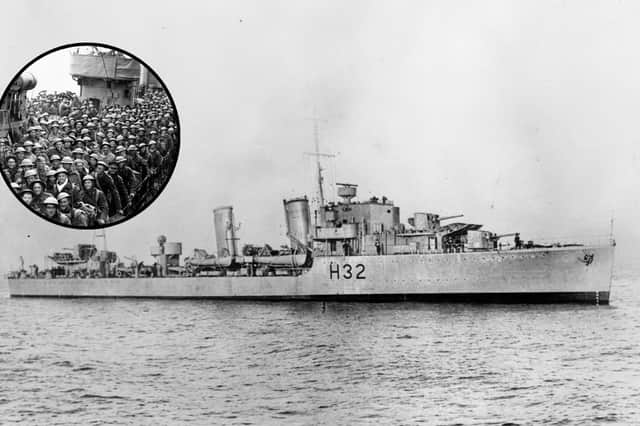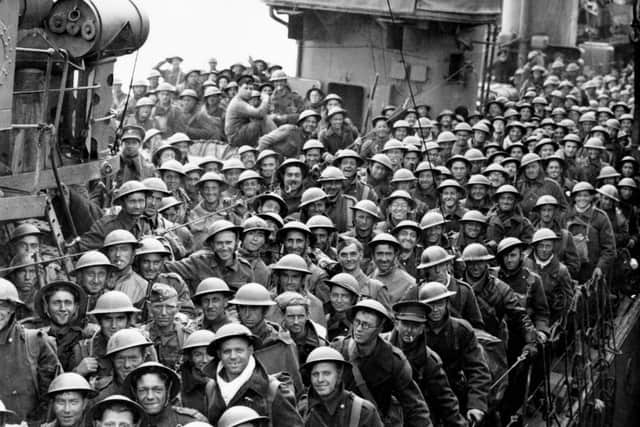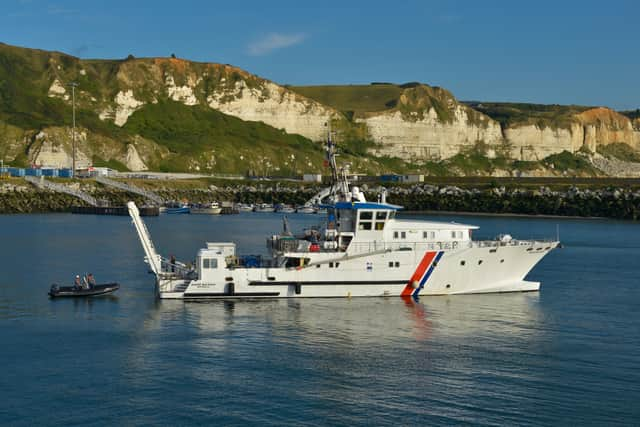Search for shipwrecks used to evacuate troops across English Channel from Dunkirk in World War II planned


An ambitious project has been announced where researchers are aiming to detect and identify undiscovered shipwrecks lost during the rescue of Allied troops from Dunkirk in World War II.
Known as Operation Dynamo, the 1940 event was a key one in the early stages of the Second World War.
Advertisement
Hide AdAdvertisement
Hide AdIt involved the evacuation of 338,226 Allied soldiers, who were surrounded by the German army, across the English Channel.
More than 305 vessels were lost during the operation.
Research in 2021-2023 by Claire Destanque, Aix-Marseille University, revealed new information about the location and condition of the wrecks.
Thirty-seven wrecks linked to Operation Dynamo have already been located in French waters, in particular by divers from Dunkirk and the surrounding area.
A further 31 vessels are believed to have been lost in the area but have yet to be located.
Advertisement
Hide AdAdvertisement
Hide Ad

The new programme being launched by Drassm – France’s Department of Underwater Archaeological Research – in partnership with Historic England, the public body responsible for England’s heritage, will search for these undiscovered wrecks.
It will also use high-tech survey equipment to document the sites that are already known.
The study will be followed by diving surveys next year to provide an overall view of this heritage and enable the introduction of conservation and public engagement strategies.
Duncan Wilson, chief executive of Historic England, said: “The evacuation from Dunkirk marked a critical point in the history of the Second World War.
Advertisement
Hide AdAdvertisement
Hide Ad“We are honoured to have been invited by the French marine heritage agency, Drassm, to join their investigation of ships sunk in those desperate days.


“These wrecks are a physical legacy to Operation Dynamo and all those it affected, including many who did not reach safety.”
The initial results of this research will be shared with the public at events organised from 13 to 15 October in partnership with the Communaute Urbaine de Dunkerque.
From 26 May to 4 June 1940, military, transport, fishing and service vessels, as well as pleasure craft, were used to carry out this operation.
Advertisement
Hide AdAdvertisement
Hide AdMore than one thousand ships – flying British, French, Belgian, Dutch, Polish, Danish, Norwegian and Swedish flags – were involved in the nine days and nights of the evacuation.
The research operation is being led by Drassm with operation managers Cécile Sauvage and Claire Destanque, both archaeologists. It will be conducted from the André Malraux, a Drassm research vessel captained by Fabien Géreux (Bourbon Offshore Surf). The campaign will involve geophysicists from Drassm and Historic England.
This mission is the first collaboration between Drassm and Historic England. The initial results of this research will be shared with the public at events organised from 13 to 15 October in partnership with the Communauté Urbaine de Dunkerque.
Events in Dunkirk at the end of the operation include:
- Friday 13 October, from 5.30pm to 7.30pm, at the Hôtel communautaire, Dunkerque
This will be a conference presenting the Operation Dynamo wrecks and the initial results of the research campaign. Lectures will be given by Claire Destanque, Alexis Rochat, Cécile Sauvage, from the Drassm team, and Bruno Pruvost, member of the Dunkirk diving club. The event will be moderated by Delphine Marschal, community delegate in charge of Heritage and Places of Remembrance. Admission is free and there will be a discussion with the press at the end of the conference.
- Saturday 14 and Sunday 15 October, 2pm to 6pm, Quai Freycinet 1, Dunkirk
During these dates there will be open afternoons on board the ship André Malraux, including a tour of the ship and presentation of the mission. Free admission subject to availability.
Comment Guidelines
National World encourages reader discussion on our stories. User feedback, insights and back-and-forth exchanges add a rich layer of context to reporting. Please review our Community Guidelines before commenting.
